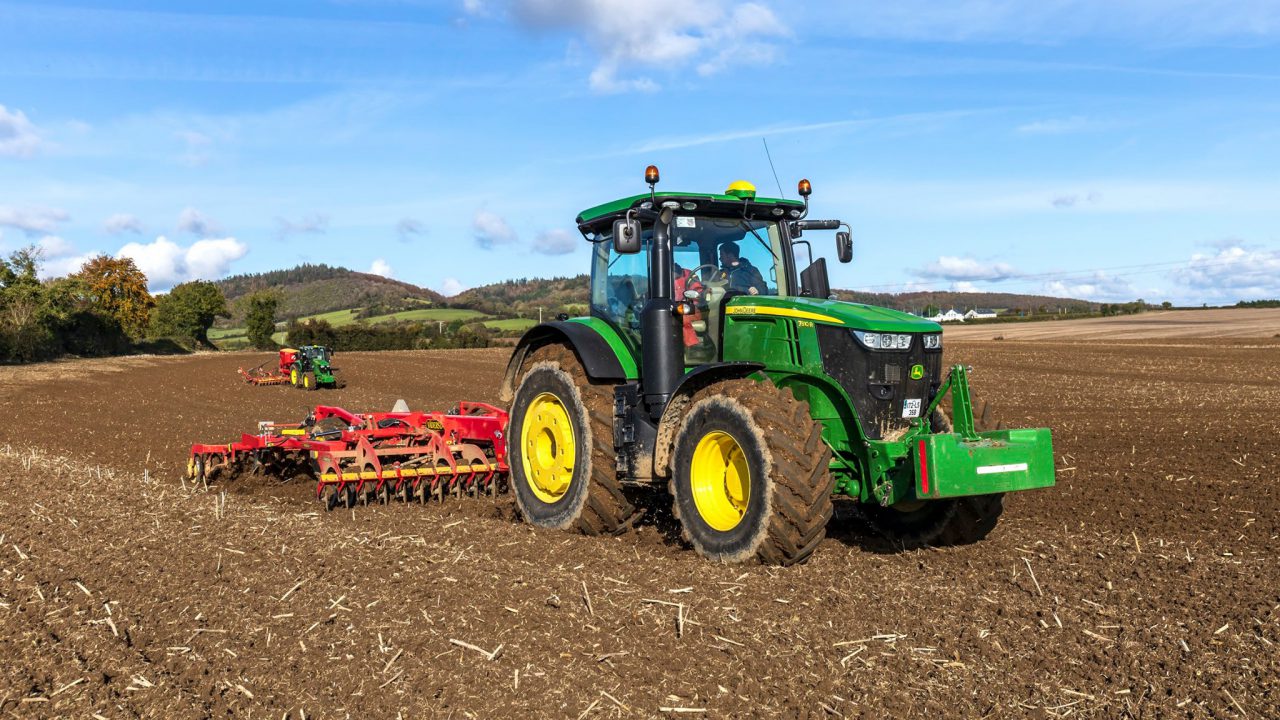The rain of recent days has dashed hopes of winter planting across the country. In the past week, rainfall has been above normal for the time of year.
Gurteen recorded the highest rainfall levels at 50.1mm – twice the weekly average, according to Met Éireann. Rainfall was 2.5 times above normal at Dublin Airport at 44.7mm.
The midlands and east were most affected by the heavy rainfall and Met Éireann is reporting further unsettled weather, with rainfall “expected to exceed normal values in eastern areas, but below normal elsewhere”.
Drop in winter cropping area
Figures from around the country suggest a dramatic fall in the winter cropping area. Winter barley is expected to take up the majority of the area planted, while the area of winter wheat planted is much lower.
To put figures into perspective, approximately 154,400ha of winter cereals were sown in the 2018/2019 season.
The north east of the country is variable. Estimates are ranging from approximately 40% planted in Co. Meath to 60-70% in parts of Co. Louth, but again huge variation occurs. The focus for potato farmers during the drier weather was to get crops lifted, while maize harvest also delayed plantings.
Also Read: Potato harvest halted once again; prices stableMoving to the south of the country and south Tipperary is estimated to have the highest plantings at approximately 80% of intended acres planted.
Co. Wexford remains one of the worst affected areas with 35-40% of winter crops estimated to be in the ground.
Important points to note
It should be noted that these figures are only estimates of the areas planted, gathered from different parts of the country. It is very difficult to get a definitive figure.
It is also important to note that some farmers have very little, if any, planted. So while an estimate for part of the country may be given, some farmers have nothing planted at all.
Others also have potato and sugar beet crops to be harvested and that ground could have been intended for winter crops.
Yield reduction
While many farmers got more acres in last week the worry now is how those crops will perform, as wet weather has dominated the forecast since the middle of last week. High seeding rates will be a help.
However, saturated soil and slug attack are going to make it a tough few weeks on emerging crops.
The drop in acreage, coupled with a potential loss in yields, looks to be setting farmers up for reduced production next harvest.
Soil moisture deficits
Data from Met Éireann shows that the majority of soils are at field capacity, while much of the soils which are not as freely draining are saturated. A soil moisture deficit figure of 0 means the soil is at field capacity, while a figure of -10 means the soil is at saturation point.
3-crop rule
The three-crop rule is also something on most tillage farmers’ minds. The Irish Farmers’ Association (IFA) confirmed to AgriLand this week that it will be asking for a derogation from this rule for the season.
If the rule is to be lifted farmers need to be informed early so they can make good planting decisions.

